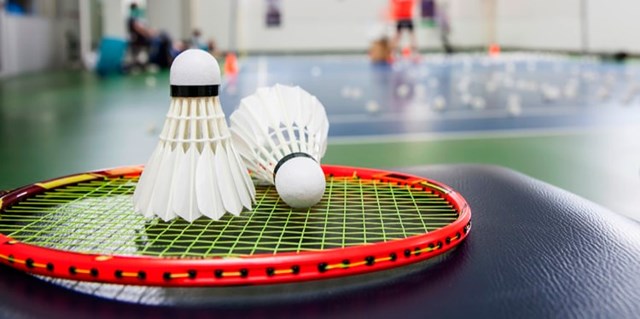In the entry that brings us together today, it is up to us to talk about the differences between badminton and tennis. Although at first glance both sports share more similarities than differences (in fact it is so). The truth is that there are some qualities that distinguish one discipline from another. Reason for which they are recognized worldwide as two different Olympic sports. And not a variant of the same as it happens with futsal and field soccer.

In this entry we will review both sports, seeing what are those distinctions or unique characteristics of each one. Well, obviously there are, only more attention should be paid to identify them. This is how these two racket sports will star in this entry, so without further delay, let’s start with the easy stuff first. What are the similarities between badminton and tennis?
Similarities between badminton and tennis.
Let’s start by listing the similarities between both sports, since it is the easiest, without mentioning that it will help us later to understand the differences.
Tennis and badminton are games that use rackets for execution, which is why they are classified in the category of “racket sports”. In addition, for both cases the court is divided by a net, and of course, they require a high resistance on the part of the athlete to be able to keep up with their matches. As if that were not enough, these sports have managed to reach the same category of professional games, and each one has its own space within the Olympic Games.
Another of the similarities that we can add to both sports is that they require the participation of two players, to wage a one-on-one. Or four players to fight duels in pairs or duos.
Now to finalize this point by compiling their similarities, we have that both sports consist of hitting an object (see a ball or a shuttlecock, for tennis and badminton respectively). And that said object crosses over the net, and makes contact with the ground or floor of the rival court. This is how points are added, to later win the sets.
Differences between both sports.
To understand what the exact differences are between the two sports, let’s first separate them. Let’s start by commenting on what badminton has to offer us that tennis does not:
Badminton.
The most notable differences of this sport with respect to tennis, we can clearly find it in the ball. Well, while in tennis we will find the use of a band and padded ball. In badminton, a shuttlecock or also known as a rooster is used. Which consists of a projectile whose tip is heavier, while a tail made up of feathers emerges from it. This design allows the different maneuvers in this sport to be carried out. Well, it gives the projectile a different behavior from that of an ordinary ball.
The second most notable difference is the rackets, as badminton rackets are considerably lighter, and much smaller than those used in tennis.
Another aspect that distinguishes badminton from tennis is the size of its court. Well, in this sport they are much smaller compared to the other, reaching only 13.40m in length, by about 5.20m in width, and the net measures a height of 1.55m. The size of the net also influences the sport, as we will notice that in badminton it is very common to play more “vertical” than horizontal. There are even moves that can be made by jumping, something that never happens in tennis.
Tennis.
On the tennis side, we find that its courts have larger dimensions than those of a badminton court. In them we will find that it has a length of 24m, by a width of 8m, and a network that has a maximum height of 1.07m.
A unique quality of tennis is that its matches have a slightly more “complex” scoring system than that proposed by the previous sport. This system is that the sets are made up of games, and in turn, the games have points. The sets are made up of six games, which differ from the rival by two points. The one who manages to reach the established number of sets wins.
Another important difference between tennis and badminton is that the former requires or demands greater physical resistance from the athlete. Well, when it is carried out on a wider field, and with a heavier instrument. The sport obviously demands more than its sister version.
This concludes this entry; we hope that now you understand how to differentiate one sport from another.

